Today’s Current Affairs: 10th Oct 2023 for UPSC IAS exams, State PSC exams, SSC CGL, State SSC, RRB, Railways, Banking Exam & IBPS, etc
Table of Contents
Accredited Social Health Activist : Planning For Incentives

The government is planning to give incentives to ASHA health activists for mobilising eligible individuals for sickle cell disease screening and distribution of sickle cell cards.
- ASHA is a trained female community health activist.
- ASHA workers are a core part of the National Rural Health Mission launched by the Government of India.
- Selected from the community itself and accountable to it, the ASHA will be trained to work as an interface between the community and the public health system.
- Functions:
- Act as a care provider at the community level.
- Facilitating access to healthcare, medicine, and sanitation services.
- Raising the level of awareness of health issues among the marginalised sections within the community.
- Advocate for female health and hygiene standards.
- An ASHA worker is primarily an “honorary volunteer” but is compensated for her time in specific situations (such as training attendance, monthly reviews, and other meetings).
- On an average, an ASHA worker’s monthly income varies from Rs 2,000 per month to Rs 7,000 per month, depending on the state.
Ruddy Shelduk : Arrived For Winter Stay

The first batch of about 50 members of the Ruddy Shelduk, popularly known as ‘Surkhab’ birds, arrived in Uttarakhand for a six month winter stay.
- Ruddy Shelduk (Tadorna ferruginea) belongs to the family Anatidae under the order Anseriformes.
- In India it is known as the Brahminy duck.
- It is distributed in Europe, Asia, Indian Subcontinent and a few pockets in Africa.
- These ducks are migratory birds.
- They winter in the Indian Subcontinent, South India and Southeast Asia.
- They inhabit large wetlands, salt lakes, crater lakes, rivers with mud flats and shingle banks.
- It is omnivorous and feeds on grasses, the young shoots of plants, grain and water plants as well as both aquatic and terrestrial invertebrates.
- They are no sitting ducks; they scale the mighty Himalayas when flying to India from the north attaining heights of 6,800 metres.
- Conservation status
- IUCN : Least Concern
Udangudi Panangkarupatti : GI Tag

Udangudi ‘Panangkarupatti’ (palm jaggery/ gur) from Tamil Nadu has received a Geographical Indication (GI) tag.
- The palm jaggery preparation procedure in this area is traditional till date without inclusion of any additional modern strategies.
- The karupatti prepared from the palm sap from the region around Udangudi in Tiruchendur taluk in Thoothukudi district has some uniqueness.
- This is due to the presence of red sand dune soil found in the region.
- This soil holds less groundwater.
- The moisture content in the atmosphere is less because of the dry climatic condition, which leads to high sucrose content, in turn adding taste.
- The region’s dry climate is also suitable for storage of karupatti for a longer duration.
- No chemical additives like Triple super phosphate and phosphoric acid are used in its preparation.
Garumbatitan morellensis : Long-Necked Dinosaur Species

Scientists discovered a massive long-necked dinosaur ‘titan’ in Spain and named it Garumbatitan morellensis.
- It was a Titanosaur species, which is a subgroup of sauropods.
- It was the only lineage to survive until the dinosaur-killing asteroid struck around 66 million years ago.
- These massive fossils, as per estimates, date back to the Lower Cretaceous period (some 145 to 66 million years ago).
- These titans belonged to the sub-group Somphospondyli.
- Titanosaur species lived from the Late Jurassic Epoch (163.5 million to 145 million years ago) to the end of the Cretaceous Period (145 million to 66 million years ago).
- Titanosaur fossils have been found on all continents except Antarctica and include some 40 species.
- The group contains the largest terrestrial animals known, some even approaching the size of modern whales.
Indian Air Force : New Ensign
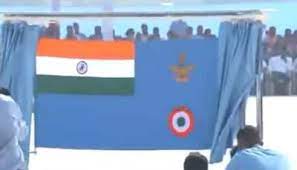
Indian Air Force (IAF) Chief Air Chief recently unveiled a new Ensign for the force.
- Only the IAF Crest will be incorporated into the new IAF Ensign.
- This crest prominently features the national symbol, the Ashoka Lion, at the top, with the words “Satyamev Jayate” in Devanagari script below it.
- Beneath the Ashoka Lion is a Himalayan eagle with outstretched wings, symbolising the fighting spirit of the IAF.
- A ring in light blue colour encircles the Himalayan eagle with the words “Indian Air Force”.
- The IAF motto, derived from the Bhagavad Gita, “Nabha Sparsham Deeptam”, meaning “touching the sky with glory,” is inscribed below the Himalayan eagle in golden Devanagari.
- IAF crest symbolises the source of inspiration and encouragement.
- IAF has adopted various crests for commands, squadrons and the other establishments.
- However, all the crests follow a standard frame that contains the individual formation sign with a motto shown in the scroll at the foot of the frame.
Key Highlights Of The RBI Draft:

Reserve Bank of India (RBI) in a recent draft proposed that lenders should classify a borrower as a wilful defaulter within six months of their account being declared a non-performing asset (NPA).
- Under the new regime, the lender must identify wilful defaulter borrowers within a specified six-month timeframe, whereas in the previous system, there was no such time constraint.
- Lenders must assess wilful default for accounts over Rs 25 lakh within 6 months of becoming NPAs.
- An Identification Committee formed by lenders reviews evidence of wilful default.
- Policies require non-discriminatory photo publishing for wilful defaulters, and no credit is given to them for up to 1 year post removal from the List of Wilful Defaulters (LWD); additionally, no credit for new ventures is allowed for 5 years after LWD removal.
- Guarantors can be pursued without exhausting remedies against principal debtors, and investigation of wilful default is necessary before transferring credit to others or ARCs.
PUSA-44 Paddy Variety : Banned
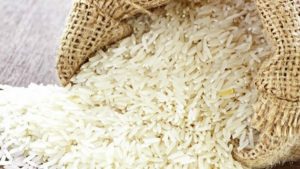
The Punjab Chief Minister has announced a ban on the cultivation of the PUSA-44 paddy variety starting next year.
- PUSA-44 was developed in 1993 and gained immense popularity among Punjab’s farmers, covering 70 to 80 per cent of the state’s paddy cultivation area due to its high yield.
- The reasons behind the ban on PUSA-44:
- PUSA-44 has a longer maturity period, requiring around 160 days to mature, which is approximately 35 to 40 days longer than other paddy varieties.
- Punjab faces severe groundwater depletion, and the government aims to conserve one month of irrigation water by banning PUSA-44.
- PUSA-44 exacerbates the problem of stubble burning in Punjab. Its harvesting just before the ideal time for wheat sowing (typically at the end of October) leaves a limited timeframe of 20 to 25 days for stubble disposal before wheat sowing.
Mont Blanc Shrinks : New research
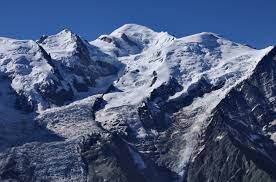
New research has revealed that Mont Blanc, France’s highest mountain has witnessed a reduction in its height over the past two years.
- Mont Blanc is the highest peak (4,807 metres) in Europe.
- It is located in the Alps and lies along the French-Italian border and reaches into Switzerland.
- It is nicknamed as “the roof of Europe”.
- Its name comes from the perennial snow cap that covers it, meaning literally “the white mountain”.
- The mountain stands in a range called the Graian Alps, between the regions of Aosta Valley, Italy, and Savoie and Haute-Savoie, France.
- The Alps emerged during the Alpine orogeny an event that began about 65 million years ago as the Mesozoic Era was drawing to a close.
- They are young fold mountains with rugged relief and high conical peaks.
- The Alps arose as a result of the collision of the African and Eurasian tectonic plates in which the Alpine Tethys which was formerly in between these continents disappeared.
ISRO Conducts Trajectory Correction Maneuver For Aditya L1 Mission:

The Indian Space Research Organisation (ISRO) has announced the successful execution of a Trajectory Correction Maneuver (TCM) for its Aditya L1 spacecraft.
- Aditya L1 is on a 110-day journey to reach the Sun-Earth Lagrangian point 1 (L1), marking one of the longest space missions undertaken by an Indian spacecraft since the 2013-2014 Mars mission.
- The TCM was necessary to ensure that Aditya L1 maintains its course and reaches its destination at L1.
- Trajectory Correction Maneuvers are essential for deep space missions to ensure that the spacecraft follows the planned trajectory accurately.
- In the case of Aditya L1, which aims to orbit L1, scientists detected possible trajectory errors soon after the Trans Lagrangian Point 1 Insertion maneuver.
- These maneuvers help correct deviations in the spacecraft’s path, ensuring that it remains on course to reach its destination.
Miura-1 Rocket: Europe’s First Private Rocket Launch
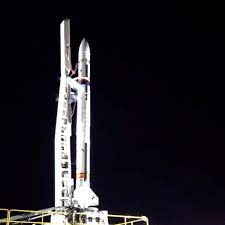
Spanish aerospace company PLD Space has achieved a significant milestone by successfully launching its recoverable Miura-1 rocket.
- The Miura-1 rocket, named after a fighting bull, conducted a suborbital test flight with the goal of gathering crucial data for future missions.
- It is a single-stage rocket standing at an impressive 41 feet (12.5 meters) tall.
- It has a payload capacity of approximately 220 pounds (100 kilograms) for suborbital space flights.
- The rocket is designed with the capability for recovery, making it a pioneering project in Europe.
- The primary objective of the Miura-1 rocket’s debut mission was to conduct a suborbital test flight. During this flight, an experiment from the German Center of Applied Space Technology and Microgravity was carried out to study microgravity conditions.
- Additionally, PLD Space placed photos of its employees on board to commemorate this milestone moment.
- The mission culminated with the rocket’s splashdown into the Atlantic Ocean.
360 Degree Appraisal Mechanism : Indian Navy
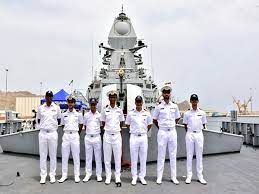
The Indian Navy has recently implemented a groundbreaking ‘360 Degree Appraisal Mechanism’ for its promotion boards.
- This aims to address the limitations of the existing assessment process by incorporating feedback from peers and subordinates.
- Under this new mechanism, the Navy conducts large-scale surveys involving suitably identified peers and subordinates for every officer being considered for promotion.
- This survey includes a wide range of questions covering aspects such as professional knowledge, leadership attributes, suitability in war or crisis situations, and potential for holding higher ranks.




